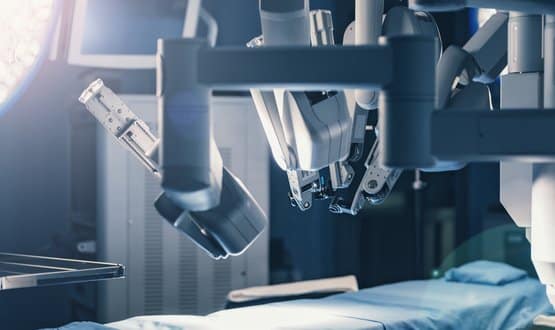Legal considerations when it comes to robotics in surgery
- 16 January 2020

Robotics in surgery is on the rise with a key development being the use of the technology during minimally invasive procedures. Hamza Drabu, a partner at DAC Beachcroft, who leads their medtech team, considers some of the main legal considerations associated with contracting for technology of this kind.
There are currently a number of surgical robotic systems on the market, ranging from the da Vinci Surgical System (used for a wide spectrum of surgical procedures, including urology and gynaecology procedures), to Smith & Nephew’s Navio Surgical System and Stryker’s Mako Robotic-Arm (both used for orthopaedic surgery), and CMR Surgical’s Versius surgical robotic system, which is used for laparoscopic procedures.
The use of robotics for surgical procedures undoubtedly has a number of potential benefits, such as making clinical care better, faster and safer; however, equally, there are a number of risks that need to be considered by the manufacturer and supplier of the robotics, the purchaser, as well as by the clinicians and patients.
How does the robot fit into the product model?
The introduction of the use of robots in surgical procedures has multiplied the number of possible ”products”; for example, the actual robot itself is likely to fit within the traditional concept of a ”product” and be classified as a medical device, but what about the software required to operate the robot? Is the software a component of the product, or is the software itself a medical device?
The manufacturer of the robot will be responsible for deciding whether the robot is a medical device and, if so, the classification of that device. Such classification will depend on the level of risk associated. Unsurprisingly, the strictest control is for products which present the greatest risk. Other factors will also be taken into consideration when classifying a device, including its intended purpose, how long it is intended to be in use for and if the device is invasive/surgically invasive. These factors tie into the liability provisions that the parties should include in the agreement.
With regard to the software required to operate the robot, the European Commission’s Medical Device Coordination Group (MDCG) issued guidance on 11 October 2019 to assist developers of medical software to determine whether their products are medical devices. The MDCG guidance (which is not legally binding) sets out that the essential question is whether the developer intends the device to have a medical purpose.
The first question to be considered is whether the software is “independent” of any other medical device: meaning, can the software autonomously perform its function? If the answer is yes, then the software must comply with the regulatory regime for medical devices, overseen by the MHRA. If the answer to the first question is “no”, the software is likely to be regarded as a component of the robot.
Life after installation
Once installed, the robot will, in most cases, be used and operated by clinicians (either employed or engaged by the customer) when performing the patient’s surgery; however, other customer personnel (e.g. nurses and theatre support staff) may also be required to use/handle the robot.
The supplier should therefore ensure that before any customer personnel use/operate the robot, it provides appropriate training to ensure the safe and effective use of the robot.
Although the clinician will be responsible for the selection of the patient parameters (such as conducting a pre-op consultation and seeking the patient’s consent for the use of the robot when providing their treatment), the parties may agree that supplier personnel will provide clinical support services. This may include uploading patient images on to the robot, and assisting with the technical settings (such as programming the robot) in preparation for the patient’s surgery. The parties should also consider what information they will share in relation to patient outcomes, by way of example, what went well, and areas for development etc.
The parties should take steps at the outset to clearly identify the surgical team and their respective responsibilities, as this is likely to help the parties assess the parameters of liability in the event that something should go wrong. Potential areas of risk include device malfunctions, device and instrument malfunctions (e.g. burnt/broken pieces of instruments falling into the patient), issues with the software (e.g. corrupted software / having to reboot the software), human error when uploading the software and/or uploading the patient images, and human error in using and/or operating the robot.
What next for robotics in surgery?
The NHS is currently undertaking market research into the robotic surgery market ahead of a planned national contractual framework due to be rolled out in 2020. The framework is expected to cover robotic surgery systems covering a wide range of medical procedures, including laparoscopic, orthopaedic, and general surgery.




